Oscar Oiwa. Rio, Tokyo, Paris, a Must-See Exhibition in the French Capital
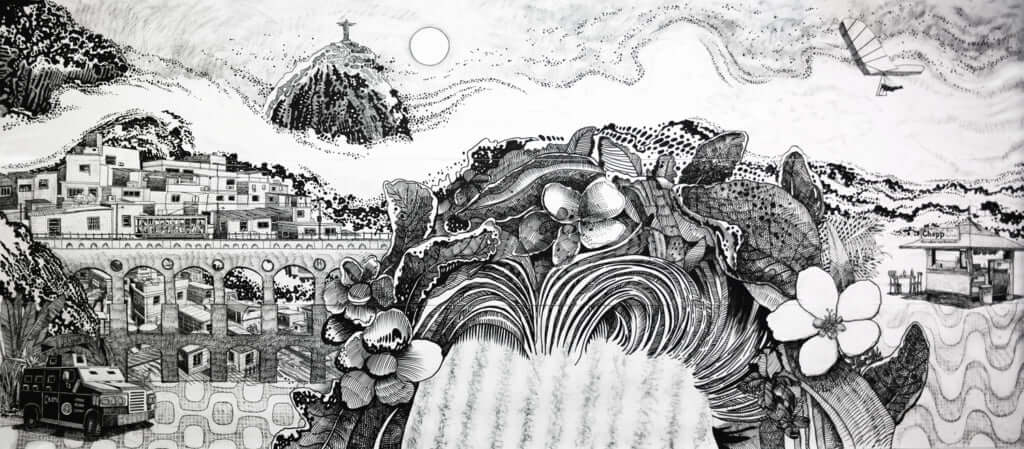
Zeus, dieu de l’Olympe (Rio), dessin au feutre et au fusain sur papier, triptyque, 300 x 670 cm ©Oscar Oiwa
Born in São Paulo to Japanese parents, artist Oscar Oiwa is also a huge fan of French culture, transposing his broad cultural heritage onto monumental black and white frescos that are both precise and ironic, somewhere between the realist and the fantastical. At the Maison de la Culture du Japon in Paris, Oiwa depicts Rio, Tokyo and Paris in an allegorical fashion, as cities enveloped in chaos, devoid of all nature.
From 18th September until 14th December 2019, his work is on display at the Maison de la Culture du Japon as part of the exhibition ‘Oscar Oiwa. Rio, Tokyo, Paris : Des Villes, des Jeux’ (Rio, Tokyo Paris, Cities and Games). The show also features watercolours and oil paintings by Makiko Tanaka and Camille Fontaine with the three artists taking the Olympic Games as their point of departure.
According to the curator Aomi Okabe, it was after having invited the artist Oscar Oiwa that he realised the link between these three cities, key to the artist’s work.
Passionate about sport, he dives deep into these towns, all of which hold particular personal significance for him, and which all have in common their relationship to major international sporting events. It is through this artistic intervention that we are invited to rethink our vision of sports with humour and nostalgia, which acts somewhat as a mirror to contemporary society.
For the exhibition, Oscar Oiwa created three frescos, each measuring 6.7 metres; while forming a triptych, each represents an aerial view of a different city. There are certain easily identifiable monuments, such as the Eiffel Tower, the Shibuya district and the Bay of Rio, as well as a number of other more niche details that define each Olympic capital.
For example, when depicting Paris, the artist chose to illustrate the Revolution, weaving in the storming of the Bastille in 1789, the student protests of May 68 and more recently, the Gilet Jaunes movement. These works, laced with a sarcastic narrative, are accompanied by several oil paintings, through which Oiwa represents a metaphorical personal take on each Olympic capital.
According to the artist, the most important element of the exhibition is drawing. Recently we have seen the emergence of the dominance of the digital in contemporary art, however in both East and West, man has always drawn using his hands, and it’s from this simple observation that the artist wanted to highlight this form of art that has played such a large part in both his life and his career.
The exhibition also gives space to two visual artists working in Paris, Makiko Tanaka from Japan and Camille Fontaine from France, graduate of the Tokyo University of the Arts.
Tanaka chose to represent the Olympic Games with a 6-metre historical timeline, packed with colour and detail. The work was created using watercolour on Japanese paper and depicts each sport with unnerving precision. It is even possible to distinguish certain Paralympic athletes, as well as Courbetin, Zeus and the Eiffel Tower.
With a much more minimalist approach, Camille Fontaine has focused on different locations of the Games, and more specifically certain details of the constructions. A fan of geometric lines, the artist has chosen to depict the bottom of a yet-to-be-built swimming pool, or the Stade de France from the presidential stand.
The artist says that she was interested in working on this empty space, as the rest of the Stade de France is so manicured it is something between the natural and the synthetic. She looks to capture the moment before the competition, a moment of contemplation that is almost mystical where the space becomes more like a zen garden.
With three painters, come three techniques, and three different artistic visions which come together to comment upon the socio-cultural aspect of sport, its history and its evolution. According to the curator, these three approaches observe the celebration of sport that humanity has transmitted through the generations since ancient times until today, illustrating images of the past, the near future and the distant future across these three cities.
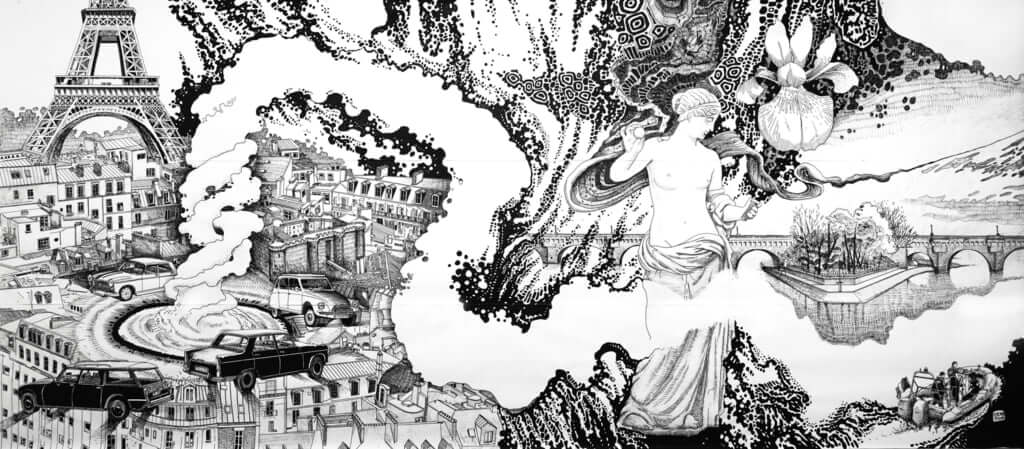
Zeus, dieu de l’Olympe (Paris), dessin au feutre et au fusain sur papier, triptyque, 300 x 670 cm ©Oscar Oiwa
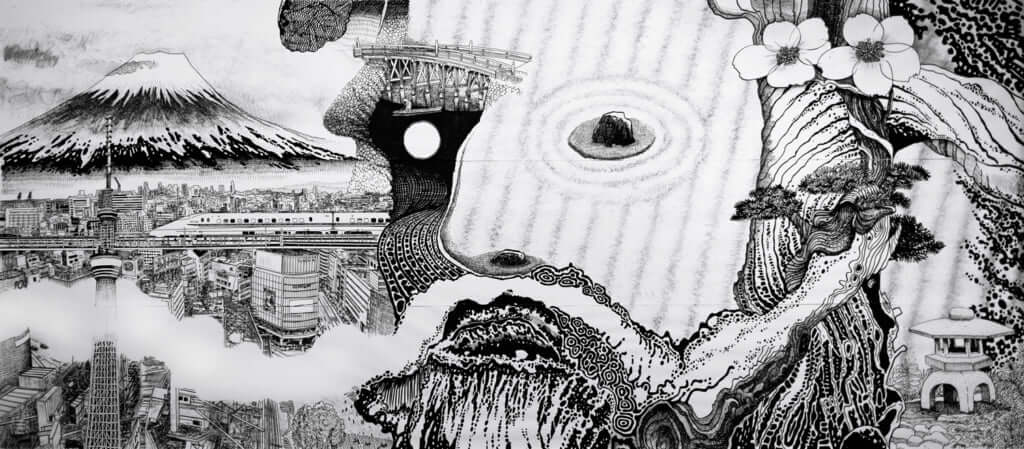
Zeus, dieu de l’Olympe (Tokyo), dessin au feutre et au fusain sur papier, triptyque, 300 x 670 cm ©Oscar Oiwa
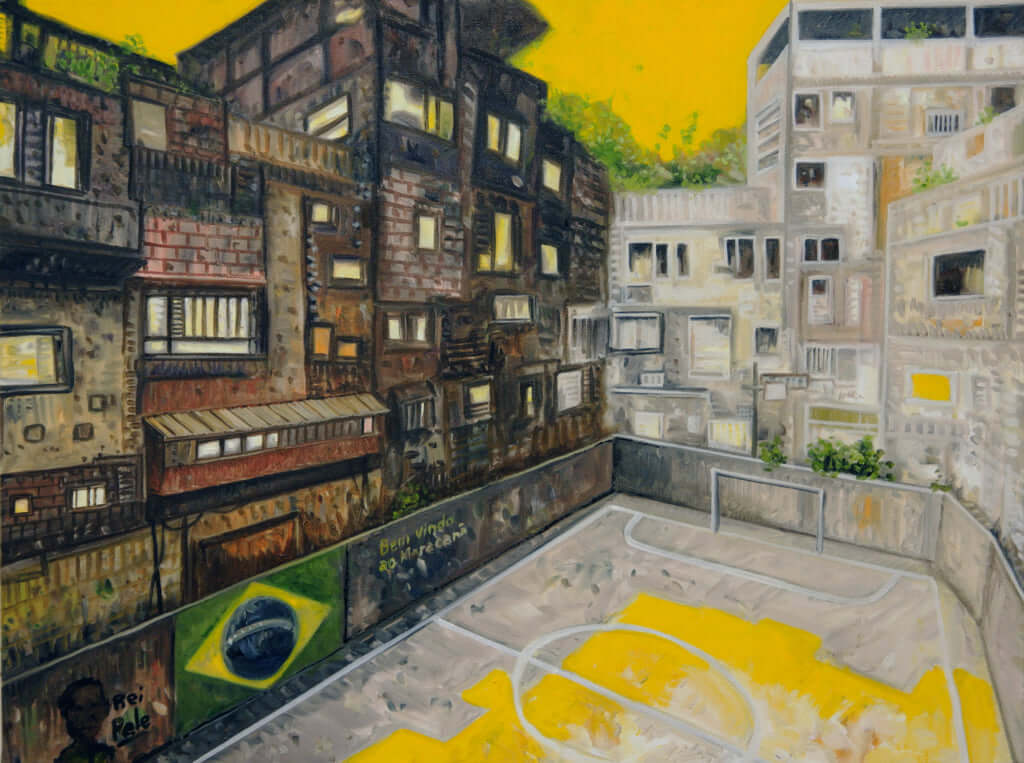
Maracanã, 2019, huile sur toile, 45,5 x 61 cm ©Oscar Oiwa
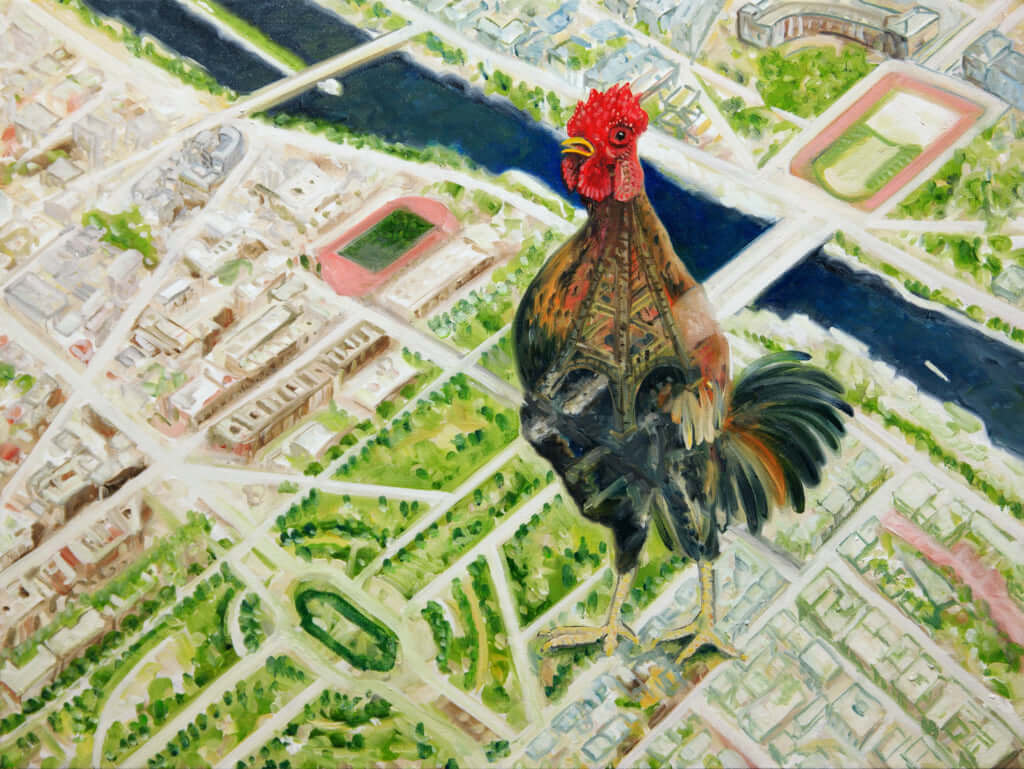
Le Coq, 2019, huile sur toile, 45,5 x 61 cm ©Oscar Oiwa
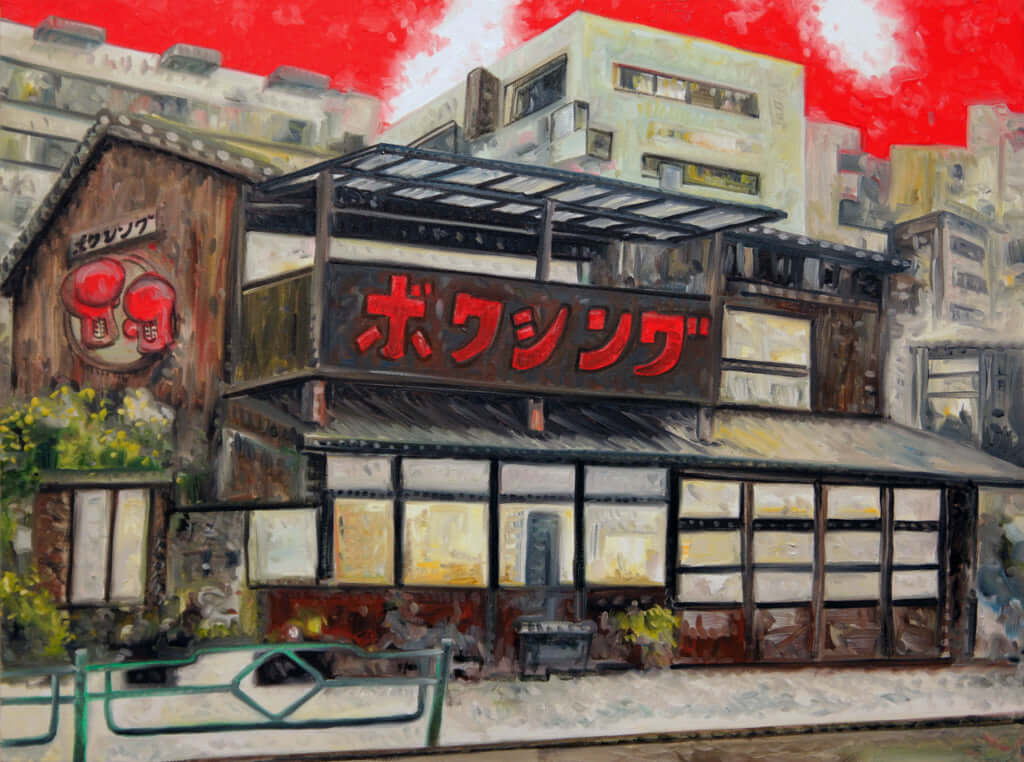
Boxe, 2019, huile sur toile, 45,5 x 61 cm ©Oscar Oiwa
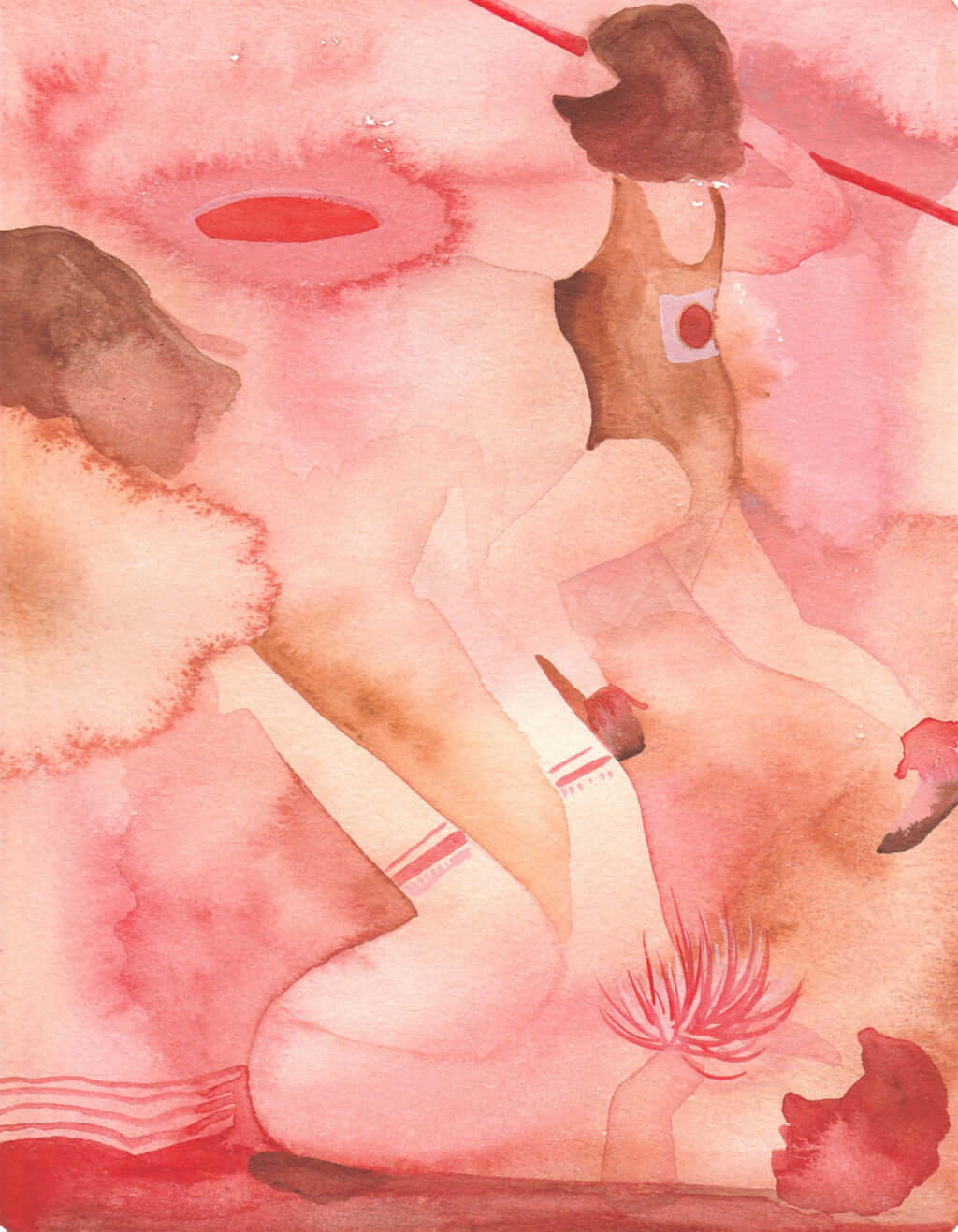
Une équipe charmante, 2019, aquarelle sur papier, 25 x 21,5 cm ©Makiko Tanaka

La piste rose – Vélodrome, 2019, huile sur toile, 40 x 50 cm, photo : Kyoko Kasuya ©Camille Fontaine
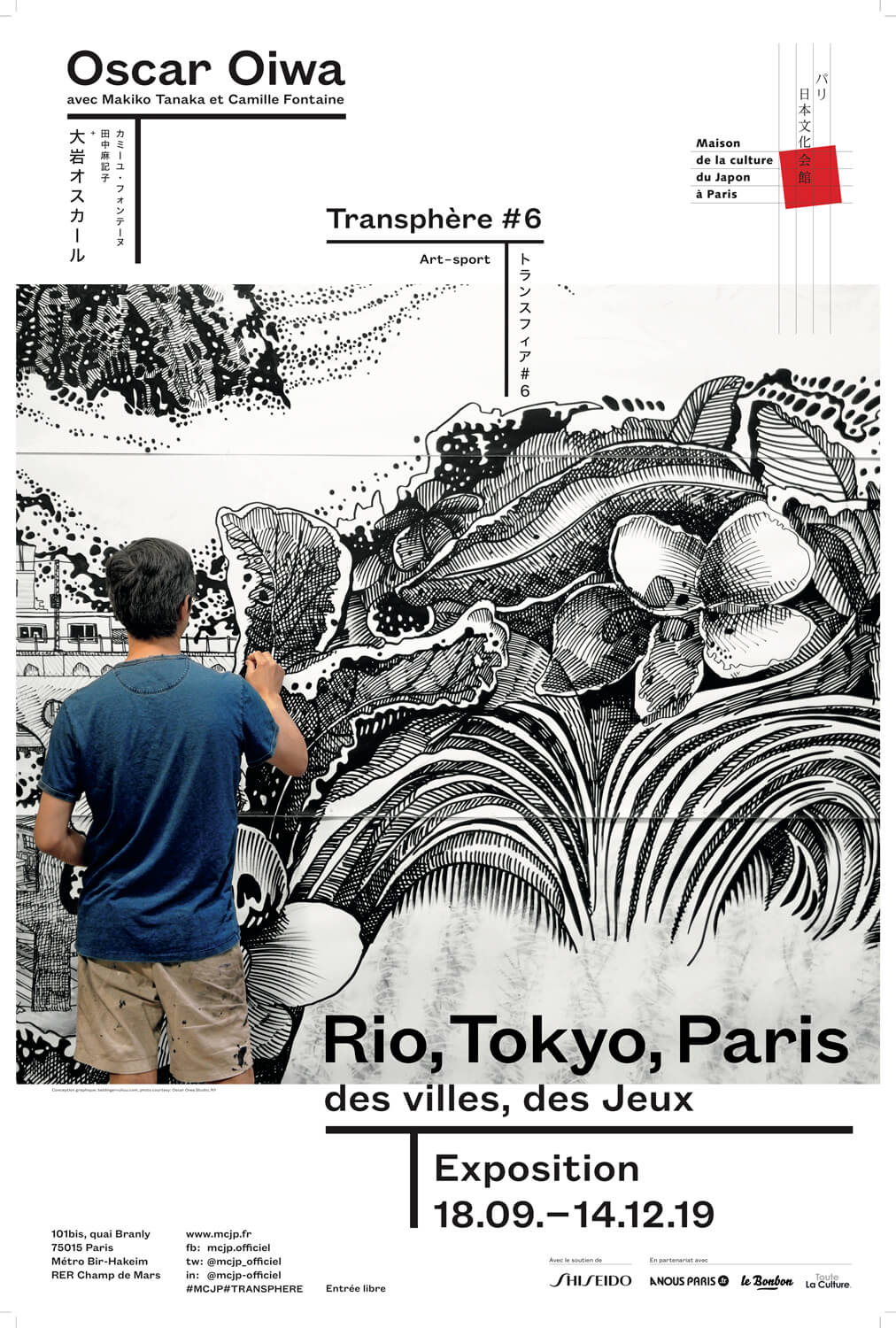
Maison de la Culture du Japon
101 bis Quai Branly, 75015 Paris
Until 19 December 2019
www.mcjp.fr/fr/agenda/oscar-oiwaTRENDING
-
Yakumo Saryo: A Culinary Voyage in Tokyo
Shinichiro Ogata makes objects from glass, ceramics and bronze but is also a fantastic cook. Have a taste of both his talents at restaurant Yakumo Saryo.

-
WA BI GIN : (An Old) Affair of Passion
The Japanese distillery Hombo Shuzo, first known for their shoshu, decided to launch itself into artisanal production of gin. Thus, WA BI GIN was born.

-
Gome Pit, the Pop-Up Bar in a Waste Treatment Facility
Japan never ceases to surprise. Gome Pit is a pop-up bar with an unobstructed view over a pit where tonnes of waste are piled up before being incinerated.

-
A Japanese Tea Room Perched Atop a Rooftop
The building, in keeping with the minimalist style of its creator, offers a splendid view of Vancouver Bay and the surrounding mountains.

-
Discover Japanese Gastronomy Through The Solitary Gourmet Manga
This illustrated black and white album follows its lead through various bars, celebrating the Japanese art of living.





